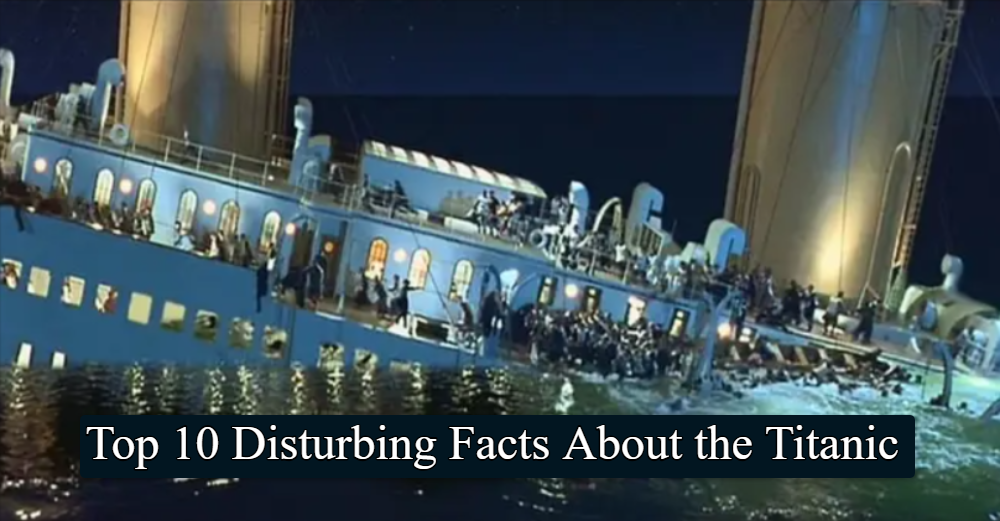Top 10 Disturbing Facts About the Titanic: Know as Unsinkable ship

Top 10 Disturbing Facts About the Titanic
The tale of the RMS Titanic is one of the most famous maritime catastrophes in recent history. The Titanic was hailed to be the “unsinkable ship,” the Titanic was tragically lost on the 15th of April 1912, after it struck an Iceberg within the North Atlantic and sank, killing more than 1500 passengers and crew members. Although the media is often awed by the Titanic and its tragic journey, there are a few troubling facts regarding the Titanic which are seldom mentioned — and make the story more frightening.
Here are 10 shocking facts regarding the Titanic which are supported by most recent findings and research into 2025.
1. The Lifeboat Shortage Was Entirely Avoidable
One of the most shocking aspects of the Titanic disaster was the lack of lifeboats. The ship was equipped with just 20 lifeboats- enough to accommodate 1,178 people, while it was home to more than 2200 people and crew aboard. It is interesting that the ship could have accommodated as many as 64 lifeboats however, White Star Line decided against it in order to preserve the luxury design along with the deck.
Regulations of the time were out of date that were based on ship’s tonnage and not passenger capacitywhich was a grave oversight.
2. Many Lifeboats Left Half-Empty
More disturbing was the reality that a lot of lifeboats departed the ship empty as they departed. Lifeboat No. 1, for instance was able to hold 40 people, yet it left with just 12 people. Insufficient training, panic, and a lack of coordination led to this utter inefficiency.
Many more people’s lives might have been spared by the proper management of lifeboats.
3. Third-Class Passengers Were Trapped Below Deck
The Titanic’s strict classifications for passengers were dangerous. A lot of Third-class (steerage) passengers who were mostly immigrants looking to start a new life in America were effectively stranded below deck due to the locked gates and delayed announcements regarding the sinking. These barriers were constructed to conform the U.S. immigration laws -but turned into dangerous traps.
Just 25% of passengers in third class lived, while 62% of first-class passengers.
4. The Lookouts Had No Binoculars
The iceberg could have been seen sooner If Titanic’s lookouts were equipped with binoculars. However, due to a last-minute change in the crew and key keys for the compartment that contained the binoculars were stolen. The new lookout group was reliant on their eyes on a night with no moon under freezing temperatures.
This small error on equipment could be the cause of a number of deaths.
5. The Ship Broke in Half — But Survivors Were Ignored
For a long time there was a belief that the Titanic did not sink completely. But, survivors’ accountswhich were often ignored at the time said the ship split in two pieces. The moment Robert Ballard discovered the wreck in 1985, it was confirmed that the ship indeed been split prior to sinking exactly as survivors claimed.
The early dismissal of eyewitness accounts kept the truth from being revealed for more than 70 years.
6. The Californian Was Nearby — and Did Nothing
It was the SS Californian, another ship within the vicinity located 10-20 miles away from Titanic was Titanic began sinking. It was able to see Titanic’s distress rockets but did not react as it was believed to be fireworks celebrating the occasion. The wireless operator was away, and the connection was not restored during critical time.
Had the Californian had acted sooner many more lives could be saved.
7. The Crew Was Largely Inexperienced
A large portion of the crew on the Titanic were rushed into employment in the days prior to departure, and were unsure of the ship’s layout as well as emergency procedures. Lifeboat exercises were either delayed or skipped entirely, leading to the chaos that ensued when the ship was evacuated.
A lifeboat drill that was scheduled for the day of sinking was cancelled without any explanation.
8. Titanic’s Radio Operators Ignored Ice Warnings
Many ships sent iceberg alerts for Titanic Titanic on April 14th 1912. Some were accepted, while other messages were ignored or never made it to the bridge because of the volume of radio traffic. It was the Titanic’s Marconi operators were more concerned with transmitting passenger messages rather than security of navigation.
Critical warnings issued by ships like the SS Mesaba and SS Californian weren’t communicated to the captain.
9. Bodies Were Left Behind
Following the sinking, rescue ships only retrieved 350 bodies out of the more than 1500 who perished. A lot of bodies remained floating in the water while others may have sunk into the depths. Some were buried in the sea while others were taken into Halifax, Canada. An eerie photo from recover missions shows bodies placed on decks of the recovery vessels.
Many families have never found the remains of their beloved relatives.
10. Some Survivors Were Villainized
Although some survivors were hailed by the press as heros, manyparticularly men -were publicly shamed for their bravery. J. Bruce Ismay, the chairman of White Star Line, was attacked in the press for securing his life while many others perished. Others were subject to media scrutiny or suspicion, or even outright hatred, simply to have survived a catastrophe that was out of their control.
People who survived often suffered emotional trauma throughout their lives, and were often harmed by the public’s judgment.
Final Thoughts: A Legacy of Lessons and Loss
The Titanic tragedy is still an event that is among the most traumatic historical events of our time not just due to the magnitude of deaths, but also because a lot of those deaths could have been prevented. From human error that was easily avoided to sexist class divisions and systemic negligence The tragedy serves as an unsettling reminder of what happens when pride outweighs prudence.






